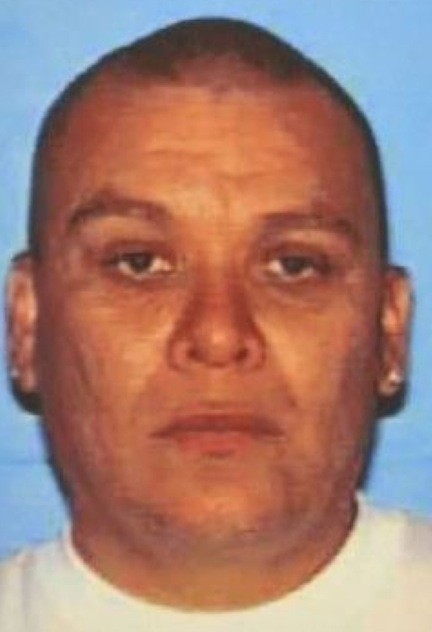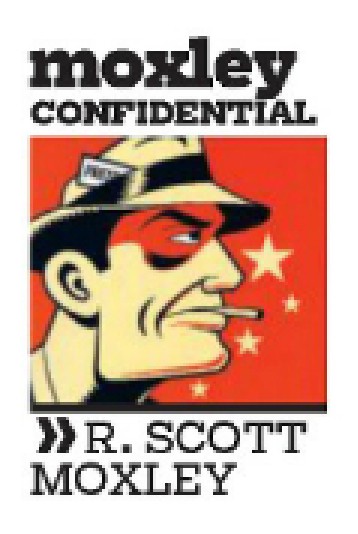
Why would anyone sane–and, more important, innocent–confess to the potential death-penalty crime of participating in a murder-for-hire plot that left a California law-enforcement officer executed on the side of the 91 freeway in Anaheim? That question will likely be pondered inside Orange County's Ronald Reagan Federal Courthouse in March, when a dramatic police-brutality lawsuit is expected to go to trial.
The case stems from the Jan. 17, 1998, killing of 40-year-old Elizabeth Ann Begaren, an off-duty California State Prison guard. That night, she'd been a passenger in a vehicle driven by Nuzzio Begaren, her husband of six months, and his 10-year-old daughter from a prior relationship. Nuzzio told police he believed gangsters witnessed him hand a cash-stuffed envelope to his wife inside the Burbank Macy's, tailed them 33 miles down Interstate 5 to Anaheim, forced them off the 91, killed Elizabeth when they saw her badge, took $4,700 in cash and fled.
]
Given statistics show spouses are often the villains in the murders of their significant others and the crime made Nuzzio a millionaire from a life-insurance policy he'd taken out on his bride three days into the marriage, Anaheim Police Department (APD) detectives suspected his involvement, but the case nonetheless went cold for nine years. In 2007, Andrew Serrata, a Los Angeles-area cop, received a tip from Juan Trujillo, who claimed he could tie the 18th Street gang to 12 murders, including Begaren's. According to Trujillo, Rafael Garcia (a.k.a “Rafa”), a member of that gang, served as a broker of the hit on the prison guard, but the information didn't win serious attention inside APD.
In late 2011, detective Daron Wyatt–an intense cop with a history of frightening suspects, comforting victims' families and solving cases once considered impossible–took over the investigation. Wyatt spent weeks studying possibilities and eventually made contact with Serrata, who by then had altered the name of the gang's hit broker to Rafael Garcia Miranda, according to court records. For Wyatt, the pieces of the puzzle filled in quickly. Serrata, by then a Los Angeles sheriff's deputy, claimed he recalled seeing Miranda four years earlier at the scene of an auto accident in Cudahy and that he'd been talking to a “well-dressed man who seemed to be out of place in the area.”
Wyatt searched the names of Miranda's neighbors, discovering that a relative of Nuzzio lived nearby. On Jan. 21, 2012, Serrata and Wyatt showed Miranda's photograph to Trujillo, and, according to the APD detective, the informant “confirmed” it was the 18th Street gang's “shot caller for hits.” Thirteen days later, a shackled Miranda sat in an APD interrogation room facing Wyatt. Police public-relations flacks guaranteed that his face appeared on Los Angeles news broadcasts as an alleged cop killer.
A bizarre series of events followed. Wyatt claims Miranda freely revealed he joined the 18th Street gang when he was 12 or 14 years old, knew Nuzzio and, for $150, brokered the request to find a $5,000 hit man to kill Elizabeth. On Feb. 7, Senior Deputy District Attorney Larry Yellin, who was working closely with Wyatt, used Miranda's confession to file capital murder charges. For nearly four months, the defendant was locked up until authorities acknowledged he was actually innocent. Trujillo's informant tips were bogus, and, besides, investigators had developed solid evidence that others participated in the killing.
Yellin–who eventually found and prosecuted three of the four participants in the murder (including Nuzzio) and continues searching for alleged shooter Guillermo Espinoza–admitted in an interview that he had been mystified about Miranda's false confession. During a meeting with Miranda after his release and with Wyatt present, the prosecutor says he sought an explanation. “[Miranda] said, 'I just wanted to be helpful,'” Yellin remembered. “He said he did feel pressured, but he didn't say he was beaten. And before he leaves, he shakes my hand.”

In his civil-rights lawsuit, Miranda tells a different story about the alleged confession. He insists that Wyatt threatened to have social workers take away his six children if he didn't do what police wanted: confess. He refused, Miranda says, telling the cop he lived in Arizona at the time of the murder. That's when the abuse began.
[
“Miranda was repeatedly hit and struck in the face and body and kicked in [the] legs all the while being called a 'cop killer' by [Wyatt and another APD officer],” according to Mark W. Eisenberg, the plaintiff's Irvine-based lawyer. “While chained to the table in the interrogation room, Miranda was pushed over in the chair in which he was seated, repeatedly choked, and held with his face pressed against the table with one or more of the defendants' weight upon him; this all the while being told his family would face consequences if he did not confess.”
Moses W. Johnson IV, assistant city attorney in Anaheim, has told U.S. District Court Judge James V. Selna, who is presiding in the case, that Wyatt didn't threaten or assault the suspect. The detective was instead making sure the suspect was comfortable, he said.
“Miranda has no one to blame but himself for this arrest,” declared Johnson, who says Wyatt acted on a legitimate law-enforcement tip and that the suspect “made incriminating statements about his involvement.” He added that there is “no evidence” of Wyatt's police brutality.
Johnson is right, but the point loses its punch upon examination. When Eisenberg requested a copy of the key interrogation videotape in March 2013, APD officials responded by claiming the footage had been erased days earlier because officers wanted to free up space on the hard drive. Wyatt said later in a deposition that procedures required him to keep the footage on a hard drive, make two copies and give one to Yellin. But he says he forgot to make the copies, so the evidence is now lost forever.
To Eisenberg, the explanation that veteran police officers accidentally destroyed evidence in a then-pending, cop-killing case “strains the boundaries” of credulity.
“Wyatt had every personal incentive to destroy any such video evidence if, as [we allege], Wyatt did in fact physically assault and batter Miranda, securing a forced confession,” Eisenberg told Selna. “Had the videos instead shown that Wyatt never touched Miranda, Wyatt would have had every reason to do everything humanly possible to ensure its retention.”

Johnson countered that Wyatt did retain multiple copies of audio files of the interrogation and those records supposedly back the officer's version. Eisenberg, who says audio can't replace video that could have visually proven physical contact, hopes the judge will advise jurors they can consider the destroyed evidence as consciousness of guilt. Johnson doesn't even want the panel to know APD destroyed evidence or to hear from Richard A. Leo, the plaintiff's internationally renowned expert on police-coerced false confessions.
But the two sides are negotiating a potential, mutually satisfying secrecy deal. Miranda seeks to block the jury from learning of his prior 18th Street gang membership, rap sheet or underworld-related tattoos. Wyatt prefers to keep jurors in the dark that he quit his Tustin Police Department job in 1989 in advance of a firing, as well as that he's also being sued in a separate pending federal case because he killed an unarmed Latino man during a minor 2009 traffic stop with a head shot. If the parties can't agree on a back-scratching pact, Selna will decide what the jury hears.
Follow OC Weekly on Twitter @ocweekly or on Facebook!

CNN-featured investigative reporter R. Scott Moxley has won Journalist of the Year honors at the Los Angeles Press Club; been named Distinguished Journalist of the Year by the LA Society of Professional Journalists; obtained one of the last exclusive prison interviews with Charles Manson disciple Susan Atkins; won inclusion in Jeffrey Toobin’s The Best American Crime Reporting for his coverage of a white supremacist’s senseless murder of a beloved Vietnamese refugee; launched multi-year probes that resulted in the FBI arrests and convictions of the top three ranking members of the Orange County Sheriff’s Department; and gained praise from New York Times Magazine writers for his “herculean job” exposing entrenched Southern California law enforcement corruption.


One Reply to “Police Got False Confession From Cop-Killer Suspect–Then Destroyed Video When Sued”